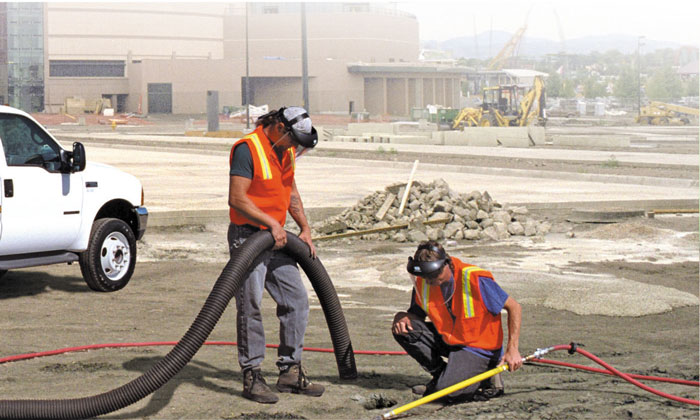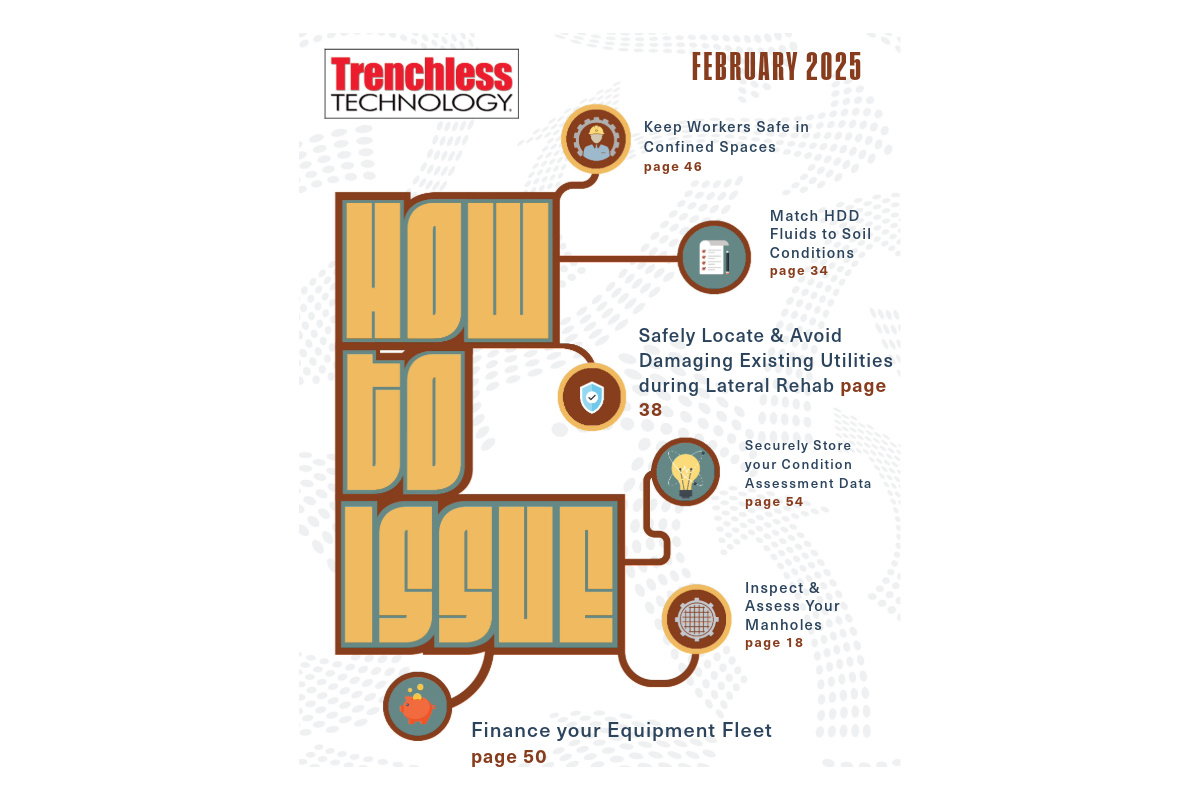Establishing Integrity in Subsurface Utility Engineering
 In the right hands, the practice of Subsurface Utility Engineering (SUE) is invaluable. SUE has the potential to improve design decisions, eliminate construction delays, protect the public safety and infrastructure and avoid escalations in project costs.
In the right hands, the practice of Subsurface Utility Engineering (SUE) is invaluable. SUE has the potential to improve design decisions, eliminate construction delays, protect the public safety and infrastructure and avoid escalations in project costs.
The profession’s vast upside is indisputable. Unfortunately, its downside often results in disastrous incidents, from broken water mains that damage roadways to exposed gas lines that create catastrophic explosions, injury and even loss of life. Despite advances in equipment and technology, the industry is plagued with a glut of unqualified practitioners and common practices that prevent the accurate detection of underground utilities.
The practice of using PVC piping in water utilities presents an ongoing challenge that inexperienced or unqualified SUE technicians may be ill-equipped to address. Throughout the last 40 to 50 years, water lines have transitioned from cast iron piping and ductile iron to the more durable, manageable PVC (plastic) alternative. From an SUE perspective, PVC piping presents multiple challenges. First, it is not easily traceable through commonly used utility detection methods. In the majority of cases, a PVC water line is completely undetectable. Secondly, water authorities don’t always perform the necessary steps to enable proper utility location.
Even under the best conditions, the practice of locating underground utilities is not an exact science. Electromagnetic detection and ground penetrating radar (GPR) are the two primary methods of locating utilities and equipment manufacturers are continuously improving technologies to make them more accurate and better equipped to sense underground materials. But these tools are only as effective as the person wielding them and even experienced SUE technicians struggle to find underground lines in certain conditions.
In reality, utility locating is a highly interpretive skill, acquired through years of hands-on experience. A thorough SUE investigation includes an equipment-based survey to designate utilities and an onsite excavation to identify the exact locations through test hole verification. SUE technicians require the benefit of years of experience to develop the skillset needed to identify utilities in varying conditions.

Initially, GPR was thought to be the answer to PVC-based utility detection issues. GPR sends out a microwave frequency pulse into the ground and returns a reflection of the object underground. Its limitations conclusively proved that technology alone would not afford SUE technicians with the level of assurance needed to locate every utility line. If the soil is wet, too dense or made of clay, the GPR cannot penetrate it properly. It’s a known issue that the SUE industry has yet to solve.
However, water authorities can quickly resolve this problem by placing a trace wire in the same trench with the PVC water pipe at the time of installation. This is a common practice with gas utilities (which are also primarily using PVC piping for gas lines), because of the known threat of catastrophic damage associated with breaching a gas utility pipe.
Washed Out:
The Potential Threats of Water Line Utility Damage
The threats to public safety and infrastructure damage from a breached water pipe should not be underestimated. For example, if a backhoe were to strike an 8- to 12-in. water main under pressure, water could potentially jet 30 to 40 ft into the air. If this occurred near a roadway, this breach could quickly undermine the pavement and cause large spans of a road to collapse, resulting in extensive damage, expenses and inconveniences, such as:
• Closing down the road until the mains can be shut off
• Disrupting water service to everyone else in the area
• Pumping water out of the collapsed roadway
• Repairing the broken water line
• Re-filling and re-paving the damaged roadway
A broken water line may not necessarily cause an explosion or electrocution (like a gas or electrical line), but it can still produce monumental damage and related expenses — all of which could have easily been avoided by simply placing a trace wire with the water line.
No Certification Required
Certifications are a pre-requisite to practice in many professional trades — from various fields of engineering disciplines to everyday electricians and plumbers. SUE technicians do not need to achieve official certification or licensing before practicing professionally in the field. In fact, an official certification process does not exist.
A professional land surveyor may be licensed after he/she has at least eight years of experience or four years of experience combined with a four-year college degree. Once a surveyor passes a state board-issued test, they are licensed to sign and seal on the plans for which they have conducted surveys (including validating the SUE technician’s findings).
Given the inherent risks of SUE, a professional license should be a pre-requisite for all practicing SUE consultants. Proper licensing would ensure that a SUE technician possess the requisite experience and expertise to effectively locate underground utilities in a variety of conditions and situations. As is the case in the surveying industry, one licensed SUE professional in a firm could validate the work performed by other SUE technicians under his supervision. But, the reality of the situation is quite different.
There are a multitude of companies throughout the United States that have literally no experience in utility locating. These companies gain entry into the profession simply by making an investment in sensing equipment, reading the manuals and sending employees out into the field with little (or no) experience. Without a licensing process, there is no guarantee that the individual in the field has any level of experience or knowledge — obviously, a very dangerous proposition.
SUE is widely adopted in cities, counties and Departments of Transportation (DOT) across the country for roadway construction. In fact, the Federal Highway Administration (FHA) will only fund DOT projects that incorporate SUE investigations. In light of SUE’s acceptance in this sector, the prevalence of relying on poorly located underground utilities from under-qualified technicians is alarming.
For better or worse, design engineers make decisions based on where utilities are located, per the SUE technician’s investigation and the land surveyor’s seal of approval. When a SUE consultant presents utility documents (usually a CAD file) to the project’s design firm, it will include all of the utilities that have been marked and surveyed. The liability, however, falls on the land surveyor, who must sign and seal the utility CAD file used by the engineering firm for design decisions— often placing his license and reputation on the line.
Road Blocks:
Negative Impacts of Poorly Marked Utilities in New Roadway Construction
High-profile projects — like designing a major highway in a highly developed urban area — are fraught with extensive underground utility congestion. These projects can be extremely complex, making it difficult for SUE technicians to properly map all of the underground gas, water, telecommunications and electrical utilities. In fact, many projects will contain multiple runs of each utility type and often include abandoned lines within project limits. The combined congestion creates a daunting jumble of underground utilities for the SUE consultant to unravel. If an unqualified technician is charged with this task, then the whole project is subject to a variety of costly complications:
• Getting stuck with mid-project delays because they uncover unexpected utilities and have to shut the project down to relocate them
• Forcing the design firm to redesign, because they now have chosen to shift the proposed stormwater systems to avoid a more costly utility relocation
• Slightly shifting the alignment of the proposed roadways to avoid utilities
The lack of faith in finding qualified SUE professionals in the surveying industry is creating a crisis of confidence. Surveyors are more reticent to sign and seal plans because there’s no way to validate the quality of the SUE technician’s work. Until there are recognized standards, guidelines and a certification to which the industry as a whole is accountable, surveyors will continue to shy away from signing and sealing plans.
Establishing Proper Certification Standards
Performed properly, SUE significantly reduces construction expenses, preserves the infrastructure and saves lives. But, the lack of standards is diminishing SUE’s credibility throughout the industry. The only way to properly restore faith in SUE is to establish a widely adopted professional certification standard. Ideally, a SUE technician should possess a minimum of five years of experience and pass board-certified written and field tests. Each company that is offering SUE should staff at least one licensed technician. If not, the practice of SUE will remain a high-risk proposition, and the unqualified companies that continue to practice will do more harm than good.
David Quickle is a project manager with Woolpert Inc., which is headquartered in Dayton, Ohio.




